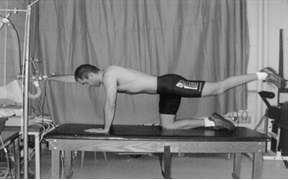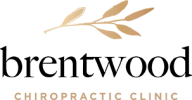Core Strengthening
FEEL BETTER. MOVE BETTER. LIVE BETTER.
Core strength and abdominal conditioning have become synonymous in recent years and people will often mistakenly think that they are working on their core just because they exercise their abs. But what is core strength in actuality?
The truth is that abdominal muscles alone are over-rated when it comes to real core strength or conditioning. The “core” actually consists of many different muscles that stabilize the spine and pelvis and run the entire length of the torso. But before we get into a discussion about all the different kinds of muscles and how to activate them, let’s first let’s quickly talk about why this is such a hot topic.
When we are talking about core strength we are really talking about spine stability, even more specifically low back or lumbar spine stability. Studies have shown that without muscles, the spine will actually buckle and cause an injury with only 20 lbs of weight. 20 lbs!! Imagine being able to only lift that much weight. Our lives would be much different to say the least. So how can some people manage to lift well over 10x that much?


Well the answer is muscles. And not only the big back muscles that you automatically think of, but also many small muscles found running in between each bone (called a vertebra) of the spine. These “core” muscles stabilize the spine as we bend, twist, lift and extend throughout our lives. And it’s when these muscles are not doing their jobs properly that we run into problems such as injuries from lifting the heavy box out of the car or simply bending down to pick up a pen off the ground. That sharp pain we experience is a result of the core muscles misfiring and allowing the spine to buckle for just a split second and therefore causing injury.
Ok, so we now have an understanding of what the core actually is. Now, the question is how do we isolate and strengthen these muscles. Remember those sit-ups that we all had to do in elementary school? It seems like they were on to something. As I mentioned already, most people know that having strong abs is important to having a strong core.

But did you know that there is more than one type of abdominal muscle? Obliques you say? That’s right, the “side” muscles are important too! What, and there’s more? The transversal abdominal muscle is another important muscle that is overlooked oftentimes. Think of this specific muscle as acting like a corset around your torso. This explains why Olympic weight lifters wear those “back braces” when they train or compete. It reinforces that corset action.
Are there any other muscles that are important? You betcha. How about the back muscles? And no, we are not only talking about the big OVER-developed ones we use for lifting. Instead we are more interested in the small ones that run from vertebrae to vertebrae. These little guys work hard to stabilize us and check our motion in order to prevent buckling of our spines. A simple exercise such as a “cross crawl” can isolate these muscles.

Anymore? The side muscles are the next group I want to tell you about. Although found in close proximity, they are different from the oblique and transverse muscles we already discussed. This group of muscles is too often forgotten, left out or done wrong. You can think of these muscles as the guy wires of the spine. A good analogy I once heard was to think of a fishing rod standing on end. It takes a minimal amount of force to bend or bow the rod when pushing from the top down. But if you attach wires on different side to the rod and anchor them to the ground tightly, it takes a tremendous amount of force to bend that rod now. That’s what our side muscles do and that’s reason that they are so important. A simple side plank or bridge will aptly tone these stabilizers.

When we are talking about toning our core we are really trying to increase the endurance that these muscles have. So just like any exercise that is designed towards endurance versus power, we are looking at lots of repetitions and long holds versus short powerful bursts. So for the abdominals and back muscles, start with anywhere from 6-10 reps of 2-3 sets and work up to 20 reps per set. For the side bridge/plank, this is a long hold rather than a repetitive motion. Hold anywhere from 5 seconds (it’s seriously harder than it looks) to one minute. Remember to do both sides! And again like all toning work outs, you should be doing this at LEAST every other day. But do yourself a favour and incorporate this into your everyday routine because you will notice the results much quicker.
